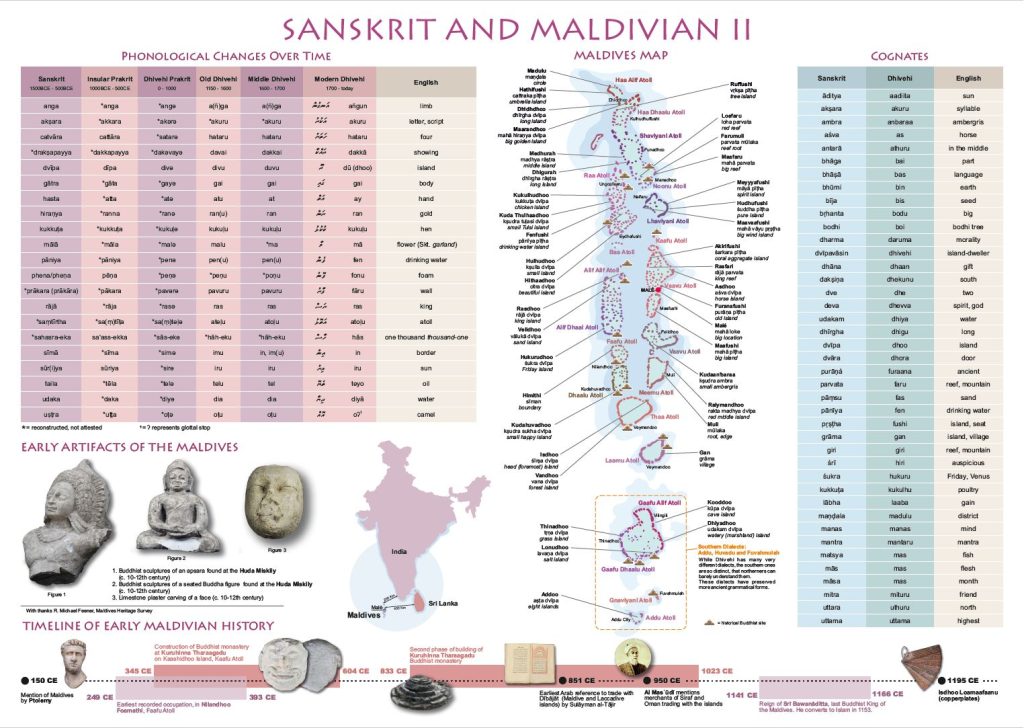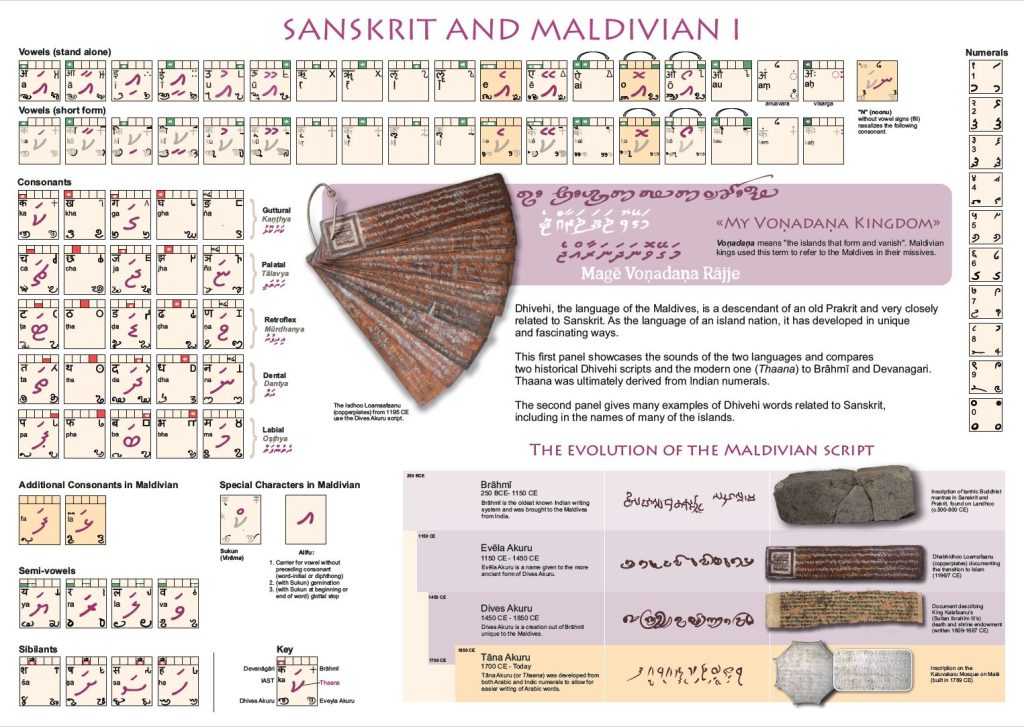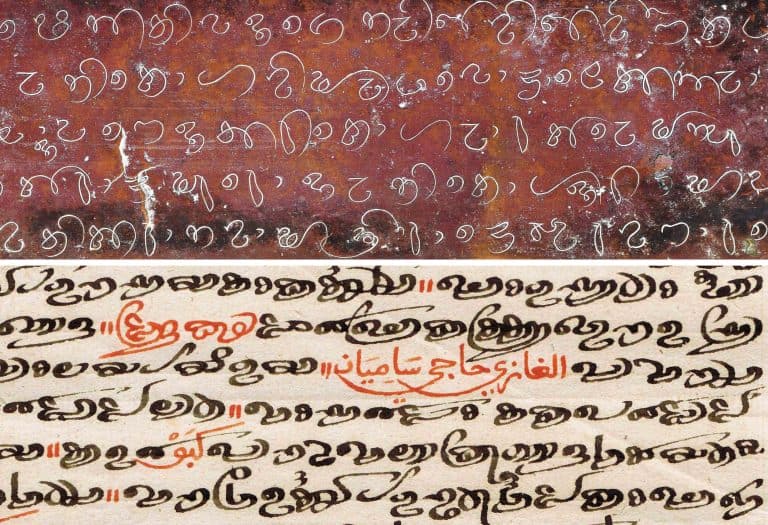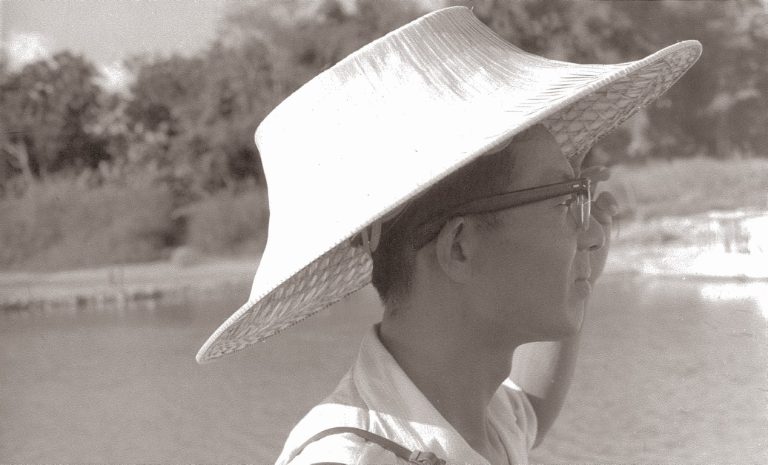Daniel Grings & Martin Gluckman
Sanskrit Research Institute
The Sanskrit Research Institute (SRI) has produced a new educational poster on the linguistic connections between Sanskrit and Dhivehi. This historical linguistic exploration sheds light on the Maldives’ early history and its relations with other parts of the Indian Ocean region.
The poster is divided into two panels. Panel One focuses on the phonology and evolution of scripts, giving a systematic visual representation of the sounds of both languages, as well as of the different scripts used to represent them over time. This includes vowels, consonants, semi-vowels, numerals, and special characters, each presented separately and represented in Devanāgarī, Brāhmī, Dhives Akuru, Eveyla Akuru, and Thaana scripts. The bottom section of this panel illustrates the evolutionary journey through these various scripts, together with photos of representative artifacts.
In the center of Panel One, next to an image of the Isdhoo Loamaafaanu (MAHS-MDV-COL-001-O-0024), the phrase “My Voṇadaṇa Kingdom” is given in several Maldivian scripts alongside an English translation and explanation. Below it follows a brief introduction and overview of the posters’ contents.
Panel Two presents further material on cognates, geography and the history of the language. This traces the phonological evolution of the language from Sanskrit via different Prakrits to older forms of Dhivehi and from there to modern forms of the language. This panel is illustrated with a map of the Maldives showing the different atolls while highlighting several examples of islands with names that can be traced back to Sanskrit, which are provided with both Sanskrit and English translations. The map also indicated the southern atolls with distinctive dialects of Dhivehi. A second, smaller map identifies the location of the Maldives relative to India and Sri Lanka.

This panel is illustrated with images of early artifacts from the Maldives, including Buddhist statues and inscribed objects. A timeline at the bottom of the panel provides material on the early settlement of the Maldives as well as references to the islands by Roman and medieval Arab writers.
The poster was created by Daniel Grings & Giuliano Cesco at SRI based on the research of Prof. Dr. Jost Gippert of Goethe University of Frankfurt, drawing on images and information provided by Prof. R. Michael Feener of Kyoto University and the MAHS. Additional resources and information were also provided by Naajih Didi at the Maldives Ministry of Arts, Culture, and Heritage.
The full version of the poster is available for free download here.






